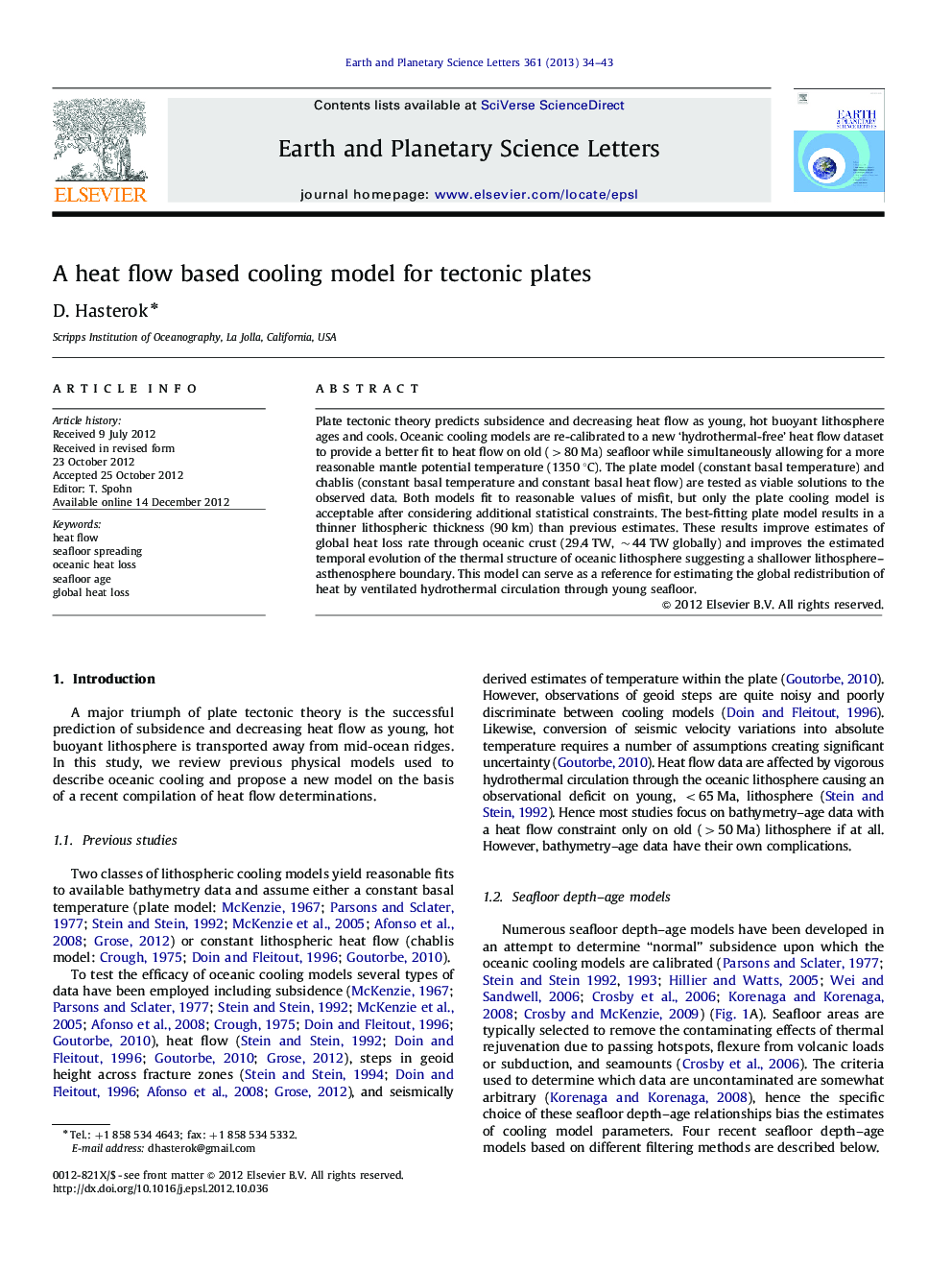| کد مقاله | کد نشریه | سال انتشار | مقاله انگلیسی | نسخه تمام متن |
|---|---|---|---|---|
| 4677157 | 1634792 | 2013 | 10 صفحه PDF | دانلود رایگان |
Plate tectonic theory predicts subsidence and decreasing heat flow as young, hot buoyant lithosphere ages and cools. Oceanic cooling models are re-calibrated to a new ‘hydrothermal-free’ heat flow dataset to provide a better fit to heat flow on old (>80Ma) seafloor while simultaneously allowing for a more reasonable mantle potential temperature (1350 °C). The plate model (constant basal temperature) and chablis (constant basal temperature and constant basal heat flow) are tested as viable solutions to the observed data. Both models fit to reasonable values of misfit, but only the plate cooling model is acceptable after considering additional statistical constraints. The best-fitting plate model results in a thinner lithospheric thickness (90 km) than previous estimates. These results improve estimates of global heat loss rate through oceanic crust (29.4 TW, ∼44TW globally) and improves the estimated temporal evolution of the thermal structure of oceanic lithosphere suggesting a shallower lithosphere–asthenosphere boundary. This model can serve as a reference for estimating the global redistribution of heat by ventilated hydrothermal circulation through young seafloor.
Cooling models for the oceanic lithosphere fit to heat flow-age data. Previous models (PS77 and GDH1) underpredict heat flow at old ages. New cooling models improve fit to heat flow and suggest plate cooling models provide the best fit.Figure optionsDownload high-quality image (281 K)Download as PowerPoint slideHighlights
► New plate and chablis cooling models of the oceanic lithosphere are developed.
► Plate cooling models provide a better fit to observed heat flow.
► The new plate model improves the fit to heat flow on old lithosphere.
► Oceanic heat loss is estimated at 29.4 TW for a total of 44 TW globally.
► Plate thickness is estimated at 90 km with reasonable adiabatic temperatures.
Journal: Earth and Planetary Science Letters - Volume 361, 1 January 2013, Pages 34–43
